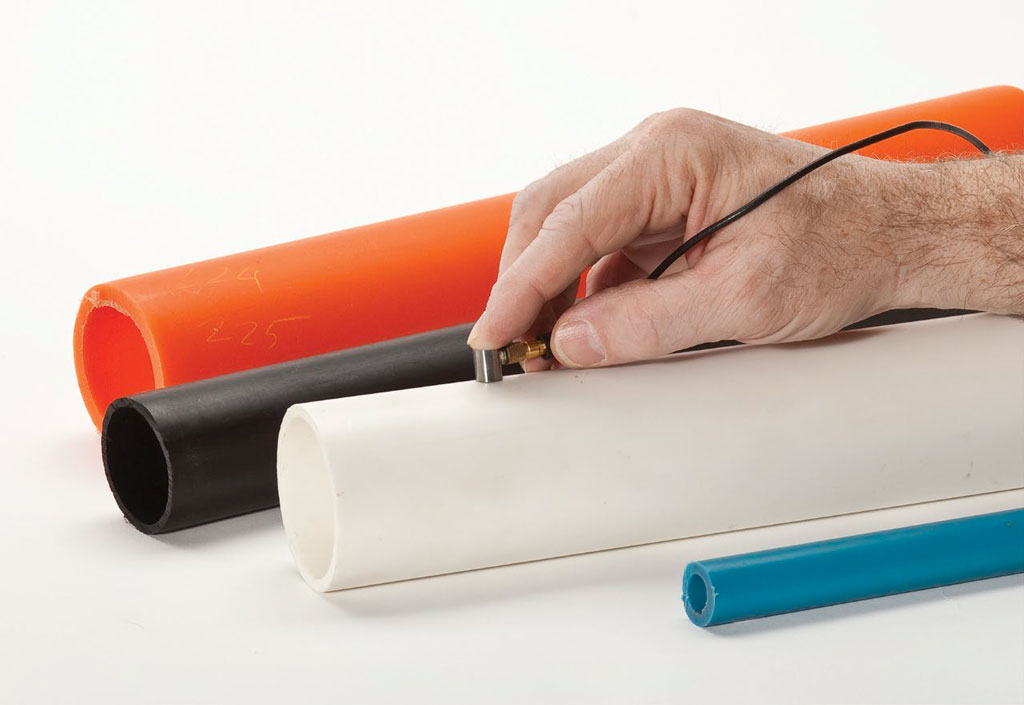
This application note will explain how to determine the wall thickness and concentricity of plastic pipes. Discover the recommended ultrasonic gauging equipment and procedure for plastic pipe and tube measurements.
Manufacturers of plastic pipes must monitor the uniformity of wall thickness around the circumference to meet product specifications. If a pipe is too thin, it may fail in use. But if it is too thick, the manufacturer can waste money on excess resin. Ultrasonic gauging provides a quick and reliable way to measure wall thickness with no need to access the inside diameter (ID) or cut the pipe. Pipe thickness can also be measured after installation if needed.
Ultrasonic Equipment Used for Plastic Pipe Measurements
The recommended instruments for plastic pipe and tube measurements are ultrasonic thickness gauges such as the 45MG gauge with Single Element software and the 38DL PLUS™ gauge. Various transducers are used, so select a transducer according to the diameter and wall thickness of the pipe or tube being measured.
For common sizes of plastic pipes, use the M112 (10 MHz) transducer for polyethylene and PVC wall thicknesses from approximately 0.020―1 in. (0.5―25 mm) and the M1036 (2.25 MHz) transducer for thicknesses greater than approximately 1 in. or 25 mm. Contact us for specific recommendations.
For very small diameter tubing (less than approximately 0.125 in. or 3 mm diameter), refer to the information for the 72DL PLUS™ high-frequency thickness gauge. Very small tubing and hot pipes are special cases. Learn more in these application notes:
- Thickness of Small-Diameter Tubing (www.olympus-ims.com/applications/thickness-small-diameter-tubing)
- High-Temperature Ultrasonic Testing (www.olympus-ims.com/applications/high-temperature-ultrasonic-testing)
Ultrasonic Gauging Procedure for Plastic Pipe Thickness Measurement
Plastic pipe thickness measurement is a common application for ultrasonic gauges. It usually involves a simple pulse/echo test where a gauge measures the round-trip pulse transit time and uses that time measurement plus the speed of sound in the test material to calculate thickness.
As with any ultrasonic test, sound velocity must be calibrated on a sample of the material being measured according to the simple procedure described here. Once that is done, inspectors only need to apply a drop of liquid couplant to the test point, touch the transducer to the surface, and obtain a reading. Measurements take only a few seconds each and can be recorded on gauge data loggers for documentation and analysis.
For more information on plastic pipe thickness measurement or other ultrasonic test applications, contact Olympus.




